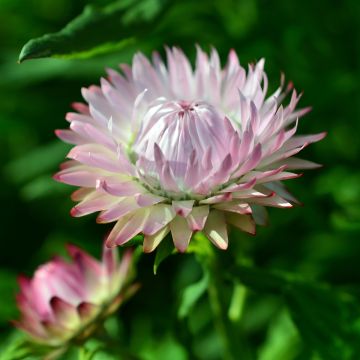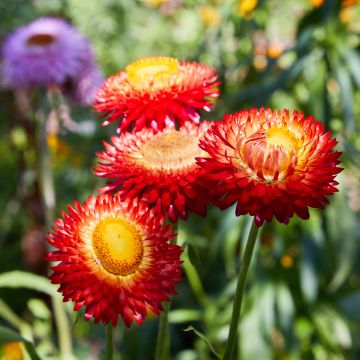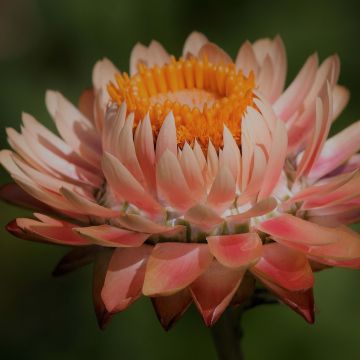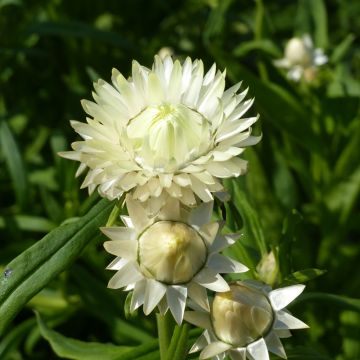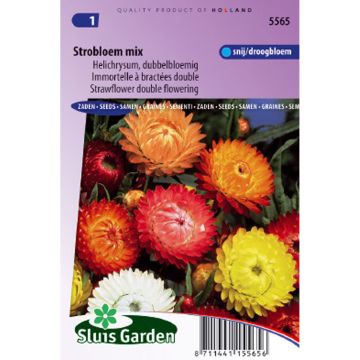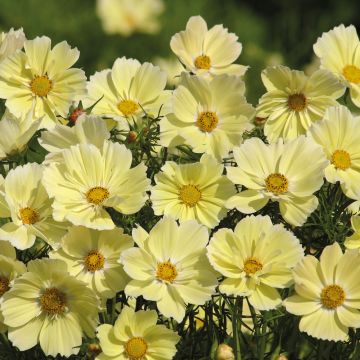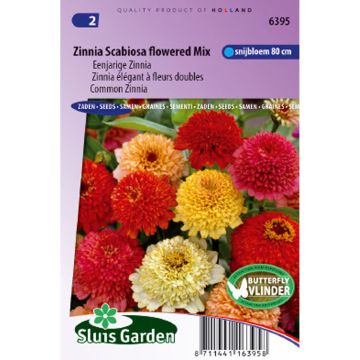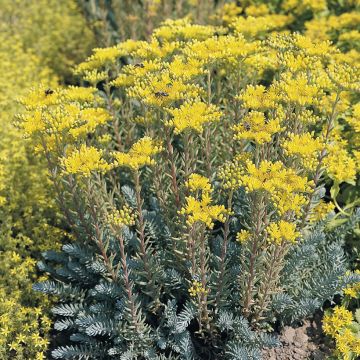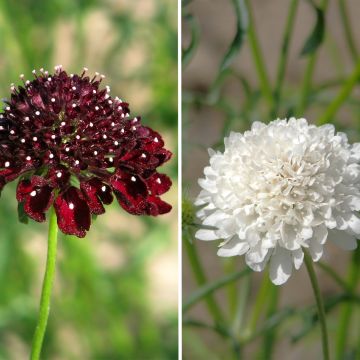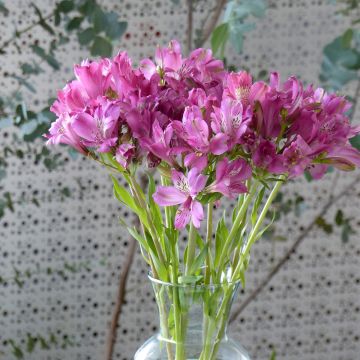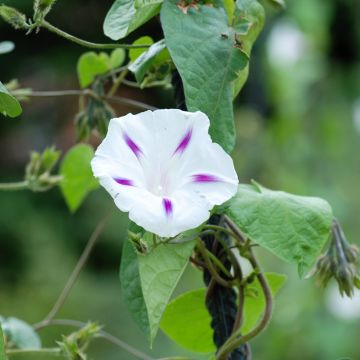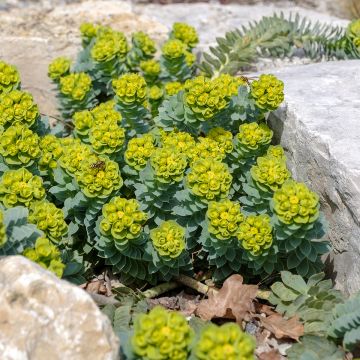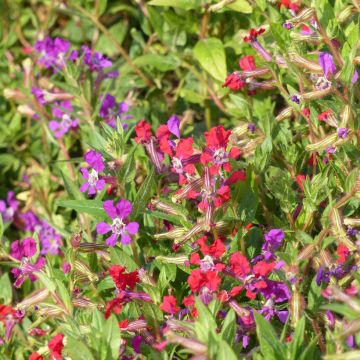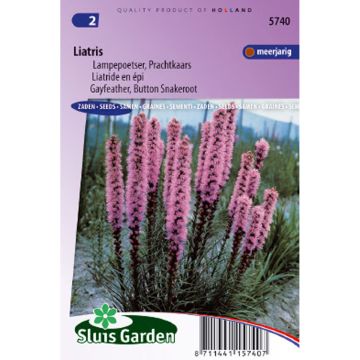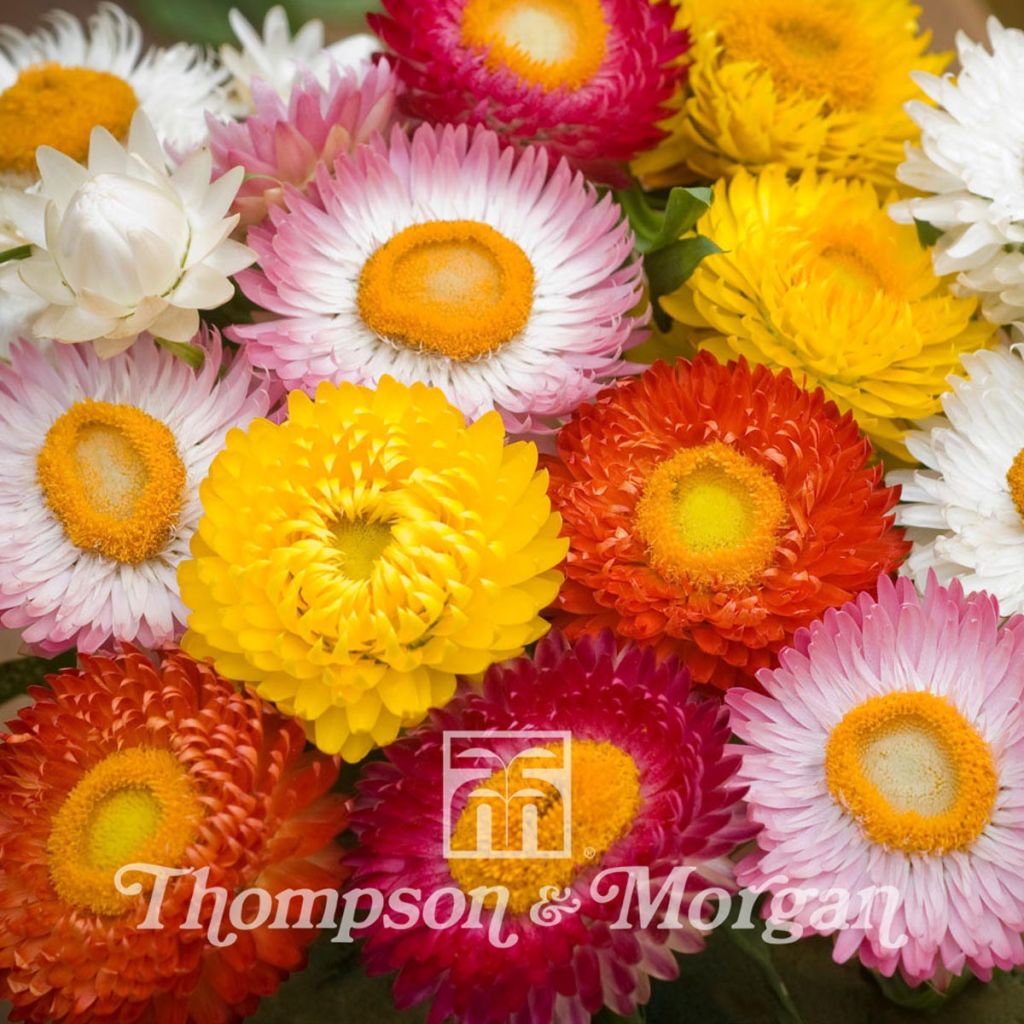

Helichrysum Bright Bikini Mixed - Strawflower seeds
Helichrysum Bright Bikini Mixed - Strawflower seeds
Helichrysum x bracteatum Bright Bikini Mixed
Strawflower, Everlasting Flower, Paper Daisy
This plant carries a 6 months recovery warranty
More information
We guarantee the quality of our plants for a full growing cycle, and will replace at our expense any plant that fails to recover under normal climatic and planting conditions.
Seed-only orders are dispatched by sealed envelope. The delivery charge for seed-only orders is €3.90.
Delivery to Corse prohibited: UE law prohibits the import of this plant from mainland France to Corse as part of the fight against Xylella fastidiosa. Please accept our sincere apologies.
More information
Does this plant fit my garden?
Set up your Plantfit profile →
Description
Helichrysum monstrosum Bright Bikini Mixed, make up this mix of annual plants with a compact habit, producing an abundance of very double flower heads in 8 vibrant and bright shades in summer and early autumn. Perfect for containers, rockeries, and anywhere with shallow soil, these small plants are highly heat-resistant and tolerate temporary droughts. They are ideal for filling small spaces. The flowers last a long time in dried bouquets.
Xerochrysum bracteatum is another name for the evrlasting flower, native to Australia. This plant, belonging to the Asteraceae family, has flowers arranged in heads, but they differ from daisies and centaureas in the absence of ray florets or petals, which are replaced by coloured and shiny bracts. This characteristic allows the inflorescences to last a long time once they are dry, as the bracts do not 'wither'. The Bright Bikini Mixed selection produces small plants, not exceeding 35 cm (14in) in height. They are annual plants with an upright habit, slightly rough, sparsely branched stems, adorned with small lanceolate deciduous leaves, medium green, villous, slightly bluish, measuring from 5 to 10 cm (2 to 4in) long. Flowering occurs from summer to early autumn, depending on the sowing date. The flowers are nectar-rich and highly visited by butterflies. Depending on the plants, the 3 to 5 cm (1 to 2in) diameter flower heads come in 8 colours: white, bright yellow, orange, light pink, bright pink, dark pink, coppery red, or dark red.
Report an error about the product description
Flowering
Foliage
Plant habit
Botanical data
Helichrysum
x bracteatum
Bright Bikini Mixed
Asteraceae
Strawflower, Everlasting Flower, Paper Daisy
Cultivar or hybrid
Other Graines d'Immortelles
Planting and care
Everlasting flowers can be sown in spring using two methods:
1- Seeds can be sown in February-March-April under a frame, in situ, in garden soil mixed with compost. The seedlings will germinate and then be transplanted into individual pots as soon as possible, and planted out in May, with a minimum spacing of 35 cm (14in). Flowering will begin in July.
2- Seeds can also be directly sown after the last frost, in March, April or May depending on the climate of your region. It is necessary to thin out the seedlings to obtain robust plants. Flowering will begin with this technique in August.
Helichrysum bracteatum prefers warm, sunny or partially shaded exposures. It thrives in moderately rich soil, close to neutral pH, and well-drained. It tolerates drought but develops better in moist soil or with regular watering, optionally enriched with a flowering fertiliser once or twice during flowering, to obtain larger flower heads. The everlastingflower grows rapidly and blooms from summer to October. It can withstand light frost, around -1 to -2 °C (30 to 28°F).
Sowing period
Intended location
This item has not been reviewed yet - be the first to leave a review about it.
Flower seeds
Haven't found what you were looking for?
Hardiness is the lowest winter temperature a plant can endure without suffering serious damage or even dying. However, hardiness is affected by location (a sheltered area, such as a patio), protection (winter cover) and soil type (hardiness is improved by well-drained soil).

Photo Sharing Terms & Conditions
In order to encourage gardeners to interact and share their experiences, Promesse de fleurs offers various media enabling content to be uploaded onto its Site - in particular via the ‘Photo sharing’ module.
The User agrees to refrain from:
- Posting any content that is illegal, prejudicial, insulting, racist, inciteful to hatred, revisionist, contrary to public decency, that infringes on privacy or on the privacy rights of third parties, in particular the publicity rights of persons and goods, intellectual property rights, or the right to privacy.
- Submitting content on behalf of a third party;
- Impersonate the identity of a third party and/or publish any personal information about a third party;
In general, the User undertakes to refrain from any unethical behaviour.
All Content (in particular text, comments, files, images, photos, videos, creative works, etc.), which may be subject to property or intellectual property rights, image or other private rights, shall remain the property of the User, subject to the limited rights granted by the terms of the licence granted by Promesse de fleurs as stated below. Users are at liberty to publish or not to publish such Content on the Site, notably via the ‘Photo Sharing’ facility, and accept that this Content shall be made public and freely accessible, notably on the Internet.
Users further acknowledge, undertake to have ,and guarantee that they hold all necessary rights and permissions to publish such material on the Site, in particular with regard to the legislation in force pertaining to any privacy, property, intellectual property, image, or contractual rights, or rights of any other nature. By publishing such Content on the Site, Users acknowledge accepting full liability as publishers of the Content within the meaning of the law, and grant Promesse de fleurs, free of charge, an inclusive, worldwide licence for the said Content for the entire duration of its publication, including all reproduction, representation, up/downloading, displaying, performing, transmission, and storage rights.
Users also grant permission for their name to be linked to the Content and accept that this link may not always be made available.
By engaging in posting material, Users consent to their Content becoming automatically accessible on the Internet, in particular on other sites and/or blogs and/or web pages of the Promesse de fleurs site, including in particular social pages and the Promesse de fleurs catalogue.
Users may secure the removal of entrusted content free of charge by issuing a simple request via our contact form.
The flowering period indicated on our website applies to countries and regions located in USDA zone 8 (France, the United Kingdom, Ireland, the Netherlands, etc.)
It will vary according to where you live:
- In zones 9 to 10 (Italy, Spain, Greece, etc.), flowering will occur about 2 to 4 weeks earlier.
- In zones 6 to 7 (Germany, Poland, Slovenia, and lower mountainous regions), flowering will be delayed by 2 to 3 weeks.
- In zone 5 (Central Europe, Scandinavia), blooming will be delayed by 3 to 5 weeks.
In temperate climates, pruning of spring-flowering shrubs (forsythia, spireas, etc.) should be done just after flowering.
Pruning of summer-flowering shrubs (Indian Lilac, Perovskia, etc.) can be done in winter or spring.
In cold regions as well as with frost-sensitive plants, avoid pruning too early when severe frosts may still occur.
The planting period indicated on our website applies to countries and regions located in USDA zone 8 (France, United Kingdom, Ireland, Netherlands).
It will vary according to where you live:
- In Mediterranean zones (Marseille, Madrid, Milan, etc.), autumn and winter are the best planting periods.
- In continental zones (Strasbourg, Munich, Vienna, etc.), delay planting by 2 to 3 weeks in spring and bring it forward by 2 to 4 weeks in autumn.
- In mountainous regions (the Alps, Pyrenees, Carpathians, etc.), it is best to plant in late spring (May-June) or late summer (August-September).
The harvesting period indicated on our website applies to countries and regions in USDA zone 8 (France, England, Ireland, the Netherlands).
In colder areas (Scandinavia, Poland, Austria...) fruit and vegetable harvests are likely to be delayed by 3-4 weeks.
In warmer areas (Italy, Spain, Greece, etc.), harvesting will probably take place earlier, depending on weather conditions.
The sowing periods indicated on our website apply to countries and regions within USDA Zone 8 (France, UK, Ireland, Netherlands).
In colder areas (Scandinavia, Poland, Austria...), delay any outdoor sowing by 3-4 weeks, or sow under glass.
In warmer climes (Italy, Spain, Greece, etc.), bring outdoor sowing forward by a few weeks.

































